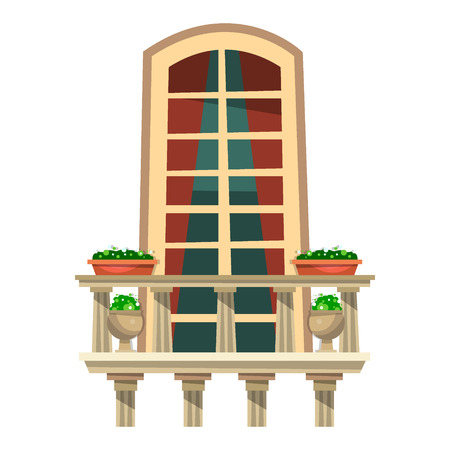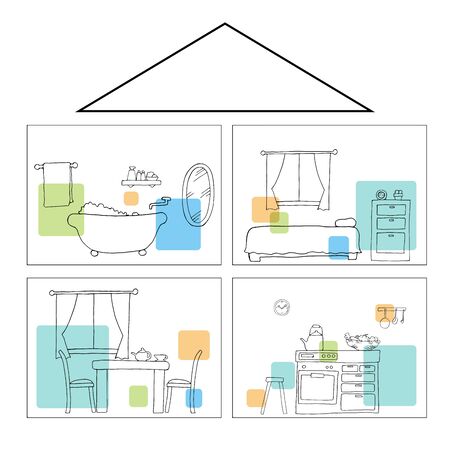Understanding the Quaker Parrot’s Personality
If you’re considering welcoming a Quaker Parrot into your home, it’s important to understand what makes these birds unique and how their personalities fit into American households. Known for their playful, energetic spirit, Quaker Parrots—also called Monk Parakeets—are incredibly social birds that thrive on interaction with their human families. They often become deeply bonded with their owners, following them from room to room and even vocalizing when they want attention. Their intelligence is another standout trait; many Quaker owners in the U.S. are surprised by how quickly these parrots pick up new words or tricks, often mimicking sounds around the house, such as doorbells or phone ringtones.
Behaviorally, Quakers can be quirky and sometimes stubborn. For example, it’s common for American pet parents to notice their Quaker building elaborate nests out of household items—anything from shoelaces to paper scraps. This nest-building instinct is a hallmark of the species and can lead to some creative (and occasionally mischievous) activity around the house. Additionally, while these birds are affectionate, they can also be territorial about their cages or favorite perches. Understanding this balance of affection and independence is key to ensuring a harmonious relationship with your feathered friend.
Overall, a Quaker Parrot’s personality combines social charm, high intelligence, and endearing quirks that make them both entertaining and rewarding companions in the typical American home.
Building Trust and Bonding
Establishing a strong bond with your Quaker parrot is the foundation for a happy and well-adjusted companion. For busy Americans, creating trust doesn’t have to be time-consuming, but it does require consistency and thoughtful activities that fit into daily routines.
Daily Routines That Build Trust
Consistency is key when building trust with your Quaker parrot. Even if your schedule is packed, setting aside regular times each day for interaction helps your bird feel secure. Here’s a sample routine that fits most American lifestyles:
| Time of Day | Activity | Duration |
|---|---|---|
| Morning | Say “Good morning” while changing food/water and offer a treat by hand | 5 minutes |
| After Work/School | Interactive play (toys, talking, step-up training) | 10–15 minutes |
| Evening | Sit nearby during TV or reading time; gentle talking or singing | 15–30 minutes |
Bonding Activities for Busy Schedules
- Meal Sharing: Let your Quaker parrot sit on a perch at the dining table while you eat. Share safe fruits or veggies as snacks.
- Training Sessions: Use short, 2–5 minute positive reinforcement sessions to teach simple tricks like “step up” or “wave.” Small, frequent sessions fit easily between other tasks.
- Involve Your Parrot: Include your bird in household routines—let them watch you cook (from a safe distance), fold laundry, or work from home.
- Treat Time: Offer treats by hand to encourage gentle behavior and reinforce positive interactions.
- Sensory Enrichment: Rotate toys weekly and introduce new textures or sounds to keep their environment stimulating without demanding extra time from you.
Cultural Tips for American Households
If you have family members, assign everyone a small bonding task each day—like greeting the parrot after school or giving it a bedtime treat. This not only builds trust but also makes your Quaker parrot feel like part of the family, which aligns well with American values of inclusivity and teamwork. Remember, patience and respect go a long way: avoid sudden movements, loud voices, or forced handling until your bird shows comfort and curiosity around you.

3. Training Basics and Positive Reinforcement
Training your Quaker parrot isn’t just about teaching tricks—it’s about building trust and a shared language between you and your bird. Start with short, daily sessions in a quiet space, using treats like small pieces of unsalted sunflower seeds or millet as rewards. Remember, consistency is key.
Teaching Basic Commands
One of the first commands to introduce is “step up.” Hold your finger or a perch near your parrot’s lower chest and gently encourage it to step onto it. Say “step up” clearly each time, rewarding with a treat and praise as soon as your bird complies. Repeat this regularly; American owners often find that working these sessions into morning or evening routines helps establish good habits.
Addressing Biting
Biting can be a challenge for many U.S. Quaker owners, especially during hormonal periods or when the bird feels scared. If your parrot bites, stay calm—don’t yell or punish, as this can damage trust. Instead, gently set the bird down or remove your hand, saying “no bite” in a firm but gentle tone. After a short break, try again. Many owners use redirection: offer a chew toy or wood block to satisfy their urge to bite.
Using Positive Reinforcement
Positive reinforcement is the backbone of effective training. When your Quaker does something right, immediately reward with a favorite treat and enthusiastic verbal praise—think “good job!” just like you’d encourage a dog or young child. Over time, gradually reduce food treats and rely more on praise, head scratches, or brief play sessions. For example, if you’re teaching “wave,” reward every correct attempt at first, then only reward when the bird lifts its foot higher or holds the pose longer.
By keeping sessions upbeat and ending on a positive note—even if progress is slow—you’ll build a confident parrot who trusts you and enjoys learning new things. This hands-on approach matches what many American families use to help their Quaker parrots thrive at home.
4. Designing a Quaker-Safe Home Environment
Creating a safe and enriching environment is essential for your Quaker parrot’s well-being and happiness. Since Quakers are highly intelligent and curious, their living space should be both secure and stimulating. Here’s how you can set up a cage and play area that meets their needs using tips and products easily found in the U.S.
Cage Selection: Safety Comes First
Choose a cage made from non-toxic, powder-coated metal with bar spacing between 1/2″ to 5/8″. This prevents your Quaker from getting stuck or escaping. The cage should be at least 18” x 18” x 18”, but bigger is always better. Place the cage away from drafts, kitchens (due to fumes), and direct sunlight, but in a spot where your bird can interact with family members.
Recommended Cage Features
| Feature | Why It Matters |
|---|---|
| Horizontal bars | Quakers love to climb; horizontal bars help exercise their feet and keep them engaged. |
| Secure locks | These clever birds can open simple latches, so choose cages with bird-proof locks. |
| Removable tray | Makes cleaning easier—essential for maintaining a healthy environment. |
Enrichment: Toys, Perches, and Foraging
A bored Quaker parrot may develop behavioral problems like feather plucking or excessive screaming. To prevent this, rotate toys weekly and use a variety of perches made from natural wood (like manzanita or grapevine) to promote foot health. For foraging, hide treats inside bird-safe puzzle toys or stuff them into untreated paper cups.
Popular U.S. Products for Enrichment
- Booda Comfy Perch: Bendable rope perches for climbing and chewing.
- Planet Pleasures Pineapple Foraging Toy: Encourages natural shredding behavior.
- Lafeber Nutri-Berries: Nutritious treats that double as a foraging activity.
- KAYTEE Lava Ledge: Provides both a perch and a place to trim nails naturally.
The Play Area: Safe Exploration Outside the Cage
Create a supervised play gym using sturdy stands or tabletop playgrounds designed for parrots. Remove hazardous items like electrical cords, toxic plants (such as philodendron), scented candles, and open windows. Always supervise out-of-cage time to prevent accidents.
Checklist for a Quaker-Safe Play Area
| Do’s | Don’ts |
|---|---|
| Provide chewable toys | Avoid small parts that could be swallowed |
| Add ladders and swings | No Teflon-coated cookware nearby (fumes are toxic) |
| Cover mirrors/windows during playtime to avoid injury | No access to other pets unsupervised |
By focusing on safety and enrichment, you’ll ensure your Quaker parrot thrives in its home—mentally stimulated, physically active, and secure every day.
5. Diet, Health, and Regular Care
Providing a balanced diet and consistent healthcare is essential for your Quaker parrot’s happiness and longevity. Here’s how to keep your feathered friend healthy in an American household:
Recommended Foods for Quaker Parrots
- Pellets: Choose high-quality commercial pellets as the foundation of their diet. Brands like Harrison’s Bird Foods or ZuPreem are widely available in U.S. pet stores.
- Fresh Vegetables: Offer leafy greens (like spinach, kale, and romaine), carrots, bell peppers, broccoli, and sweet potatoes. Always wash produce thoroughly.
- Fruits: Serve small amounts of apple (no seeds), banana, blueberries, grapes, or orange segments. Rotate fruits to provide variety but limit sugary options.
- Whole Grains: Cooked brown rice, quinoa, oats, and whole wheat pasta make healthy additions to their meals.
- Proteins: Occasionally offer cooked eggs, beans (rinsed and fully cooked), or small pieces of cooked chicken breast for extra protein.
Safe Treats
- Nuts: Unsalted almonds or walnuts in moderation.
- Pretzel sticks (unsalted): A fun crunchy treat but only occasionally.
- Popcorn: Air-popped with no butter or salt—just a few pieces as a special treat.
- Millet Spray: Available at most U.S. pet stores—use sparingly as it’s high in fat.
Routine Health Care Practices
- Cage Cleaning: Clean food dishes daily and replace cage liner every 1-2 days. Deep clean the cage weekly with bird-safe disinfectant.
- Nail Trimming: Trim nails as needed using bird nail clippers or arrange vet visits for grooming.
- Toy Rotation: Switch out toys every week to prevent boredom and reduce bacteria buildup.
- Annual Vet Visits: Find an avian vet near you (use resources like the Association of Avian Veterinarians) for yearly health checkups and emergency care if needed.
- Bathing: Provide a shallow dish of water or gently mist your parrot with lukewarm water two to three times per week for feather health.
Avoid These Foods
- Chocolate, avocado, caffeine, alcohol, salty snacks, onion, garlic, and fruit pits/seeds—these are toxic to parrots!
Pro Tip
If you’re ever unsure about a food or product’s safety for your Quaker parrot, consult your avian vet or reputable U.S.-based bird care websites before offering it. Consistent routines help your Quaker thrive physically and emotionally in your home.
6. Social Life and Entertainment
Quaker parrots are incredibly social birds that thrive on interaction and mental stimulation. To ensure your feathered friend stays happy and healthy, it’s essential to keep them entertained and engaged throughout the day. Here are some practical ways American Quaker parrot owners can enrich their pets social life and provide plenty of fun.
Engaging Toys for Quaker Parrots
Invest in a variety of bird-safe toys designed for parrots, such as puzzle feeders, chewable wood blocks, and bells. Rotate these toys regularly to maintain your Quakers interest. Many American pet stores offer themed toys—think baseball-shaped shredders or patriotic red, white, and blue swings—that add a local flair to your bird’s environment.
DIY Entertainment Ideas
If you enjoy crafting, try making homemade toys using safe household items. For example, string together untreated popsicle sticks or weave colorful paper strips through the cage bars for your parrot to pull apart. You can even create a “foraging box” by hiding treats inside crumpled paper within a cardboard box, encouraging natural problem-solving behaviors.
Social Engagement: Family & Friends
Quakers love being part of the family action. Involve them during game nights or while watching sports on TV—a common pastime in many American homes. Let your parrot perch nearby as you play board games or enjoy a backyard barbecue (with proper supervision). This inclusion helps them feel like a true member of the household.
Participating in Local Bird Clubs
Joining a local bird club or online group can be another great way to expand your parrot’s social life. Many American cities have bird enthusiast meet-ups where owners share tips and sometimes arrange safe playdates for their birds. This not only offers new experiences for your Quaker but also helps you connect with fellow parrot lovers.
Enriching Everyday Routines
Don’t underestimate the power of simple routines like daily talking sessions, teaching new tricks, or playing gentle music—genres like classic rock or jazz are often favorites among American bird owners. Keeping things fresh and interactive ensures your Quaker parrot remains curious, confident, and content in its loving home.

